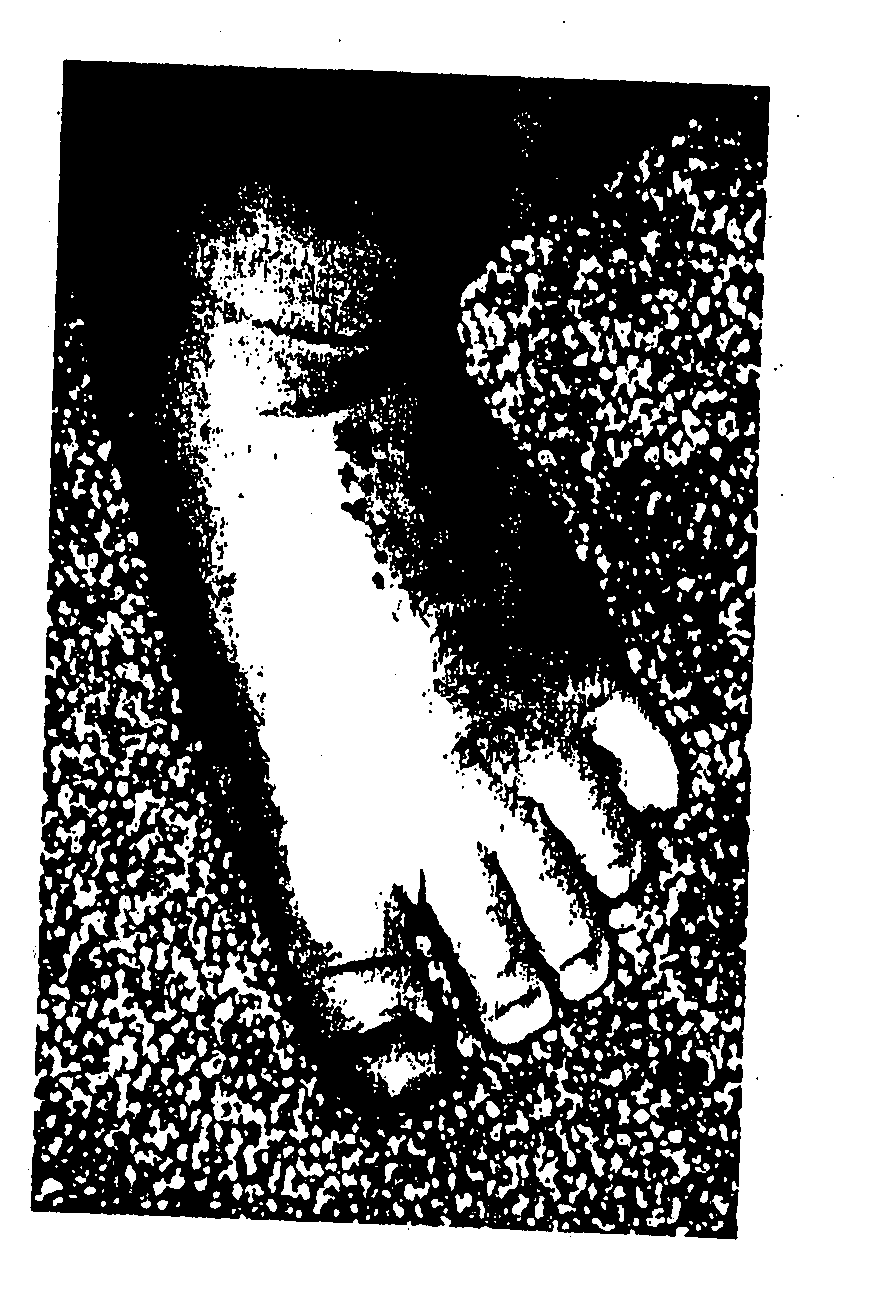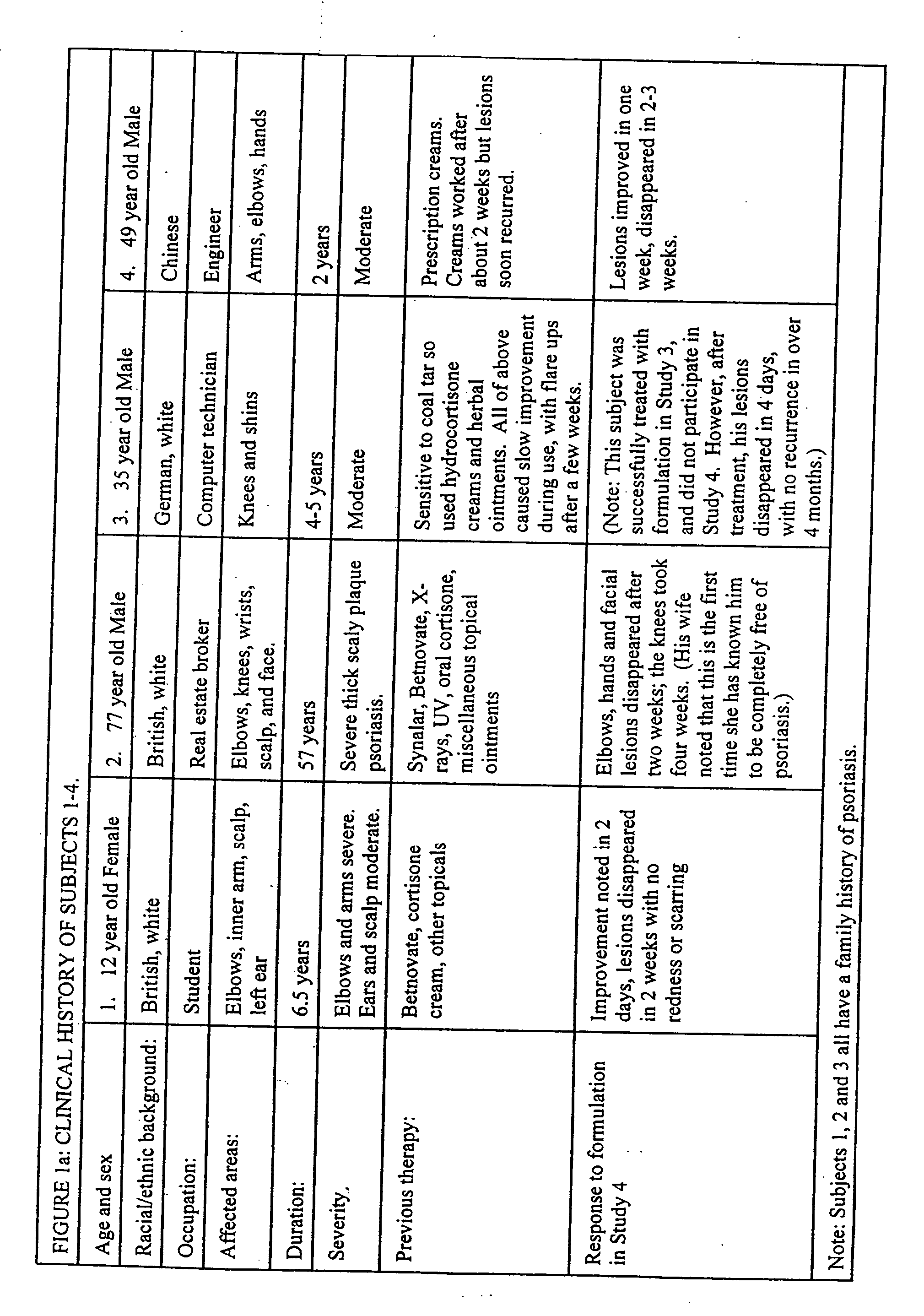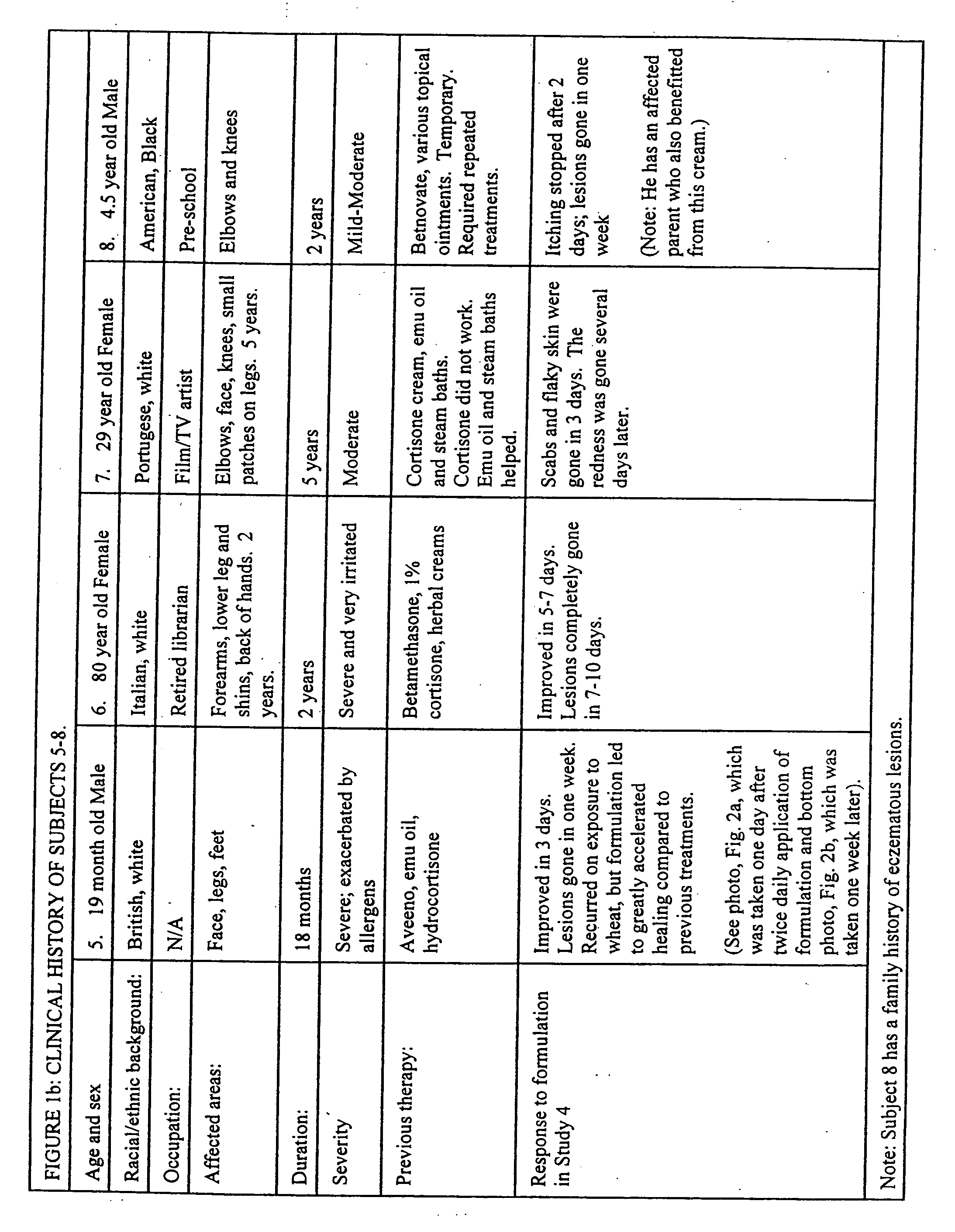Topical composition for the treatment of psoriasis and related skin disorders
a technology for psoriasis and related skin disorders, applied in the field of skin disorders, can solve the problems of reducing connective tissue synthesis, promoting recurrence during healing, and toxicity of current treatments unleashing some or all of the cytokines, so as to promote skin re-epithelialization and diminish disfiguring lesions
- Summary
- Abstract
- Description
- Claims
- Application Information
AI Technical Summary
Benefits of technology
Problems solved by technology
Method used
Image
Examples
Embodiment Construction
[0024] Psoriasis lesions may be disfiguring and often result in psychological problems. Numerous psoriasis support groups exist to help suffers cope with the disease. It is generally a lifelong disease with exacerbations and remissions, with a mean age of onset of 27.8 years. Two percent of cases occur in infants. Psoriasis is estimated to affect two percent of the U.S. population, and its worldwide prevalence is 0.1 to 3 percent. There is a significant genetic component, since 35 percent of patients have at least one affected relative. The lifetime risk without affected relatives is 4 percent, but it is 28 percent if one parent is affected, and 65 percent if both parents are affected. The genetic etiology is supported by its association with a specific genotype HLA-Cw6. Other chronic eczematous skin conditions include atopic dermatitis, which also has a genetic component, though it is less well defined than for psoriasis. Atopic dermatitis is also characterized by disfiguring red s...
PUM
| Property | Measurement | Unit |
|---|---|---|
| wave length | aaaaa | aaaaa |
| antioxidant | aaaaa | aaaaa |
| anti-platelet adhesion | aaaaa | aaaaa |
Abstract
Description
Claims
Application Information
 Login to View More
Login to View More - R&D
- Intellectual Property
- Life Sciences
- Materials
- Tech Scout
- Unparalleled Data Quality
- Higher Quality Content
- 60% Fewer Hallucinations
Browse by: Latest US Patents, China's latest patents, Technical Efficacy Thesaurus, Application Domain, Technology Topic, Popular Technical Reports.
© 2025 PatSnap. All rights reserved.Legal|Privacy policy|Modern Slavery Act Transparency Statement|Sitemap|About US| Contact US: help@patsnap.com



